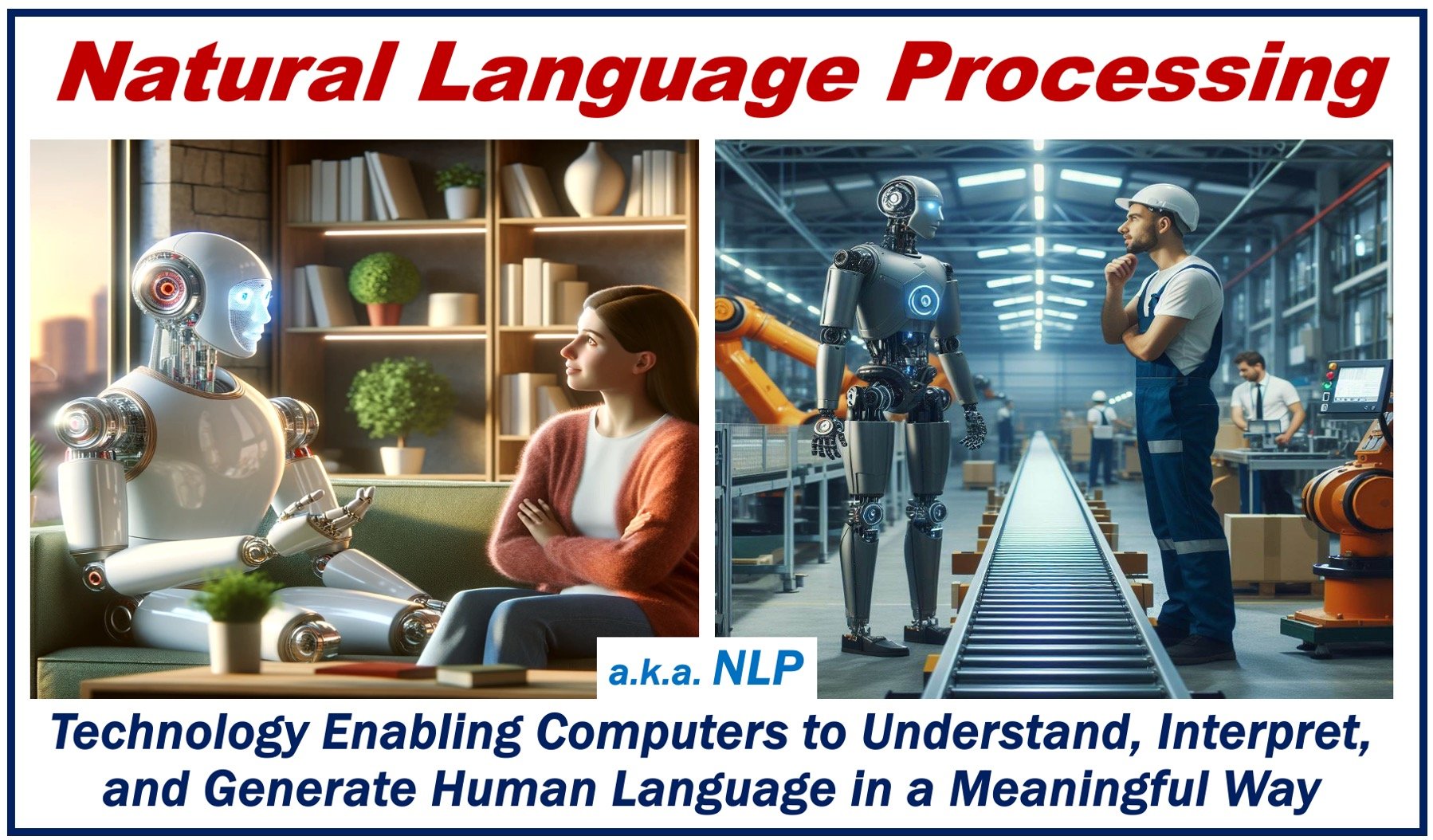Natural Language Processing or NLP is a fascinating field that sits at the intersection of artificial intelligence (AI), computer science, and linguistics.
NLP focuses on how computers and other ‘smart’ devices can understand, interpret, and generate human language both meaningfully and in a useful way. A smart device a a piece of electronic equipment that is able to connect, interact, and share data with other smart devices without human intervention.
It is no longer something we only dream about or speculate as a future technology – it is already here. NLP powers many of the digital services we use daily, from translation apps, search engines, and voice-activated assistants, to customer service chatbots.
IBM, an American multinational technology company, says the following about the term:
“Natural language processing, or NLP, combines computational linguistics—rule-based modeling of human language—with statistical and machine learning models to enable computers and digital devices to recognize, understand and generate text and speech.”
The term “Natural Language Processing” has been around since the 1950s, during the early days of computer science and AI research.
NLP – a bridge between humans and machines
At its core, natural language processing aims to bridge the gap between human communication and computer understanding.
It involves teaching computers to recognize the complexities of human language, including idioms, proverbs, slang, and variations in dialect.
Grasping context and nuance, which is second nature to us but not inherently understood by computers, is one of the biggest challenges of natural language processing.
NLP techniques involve a mix of machine learning, deep learning, and statistical methods. These approaches allow computers to analyze large amounts of natural language data.
The process begins with breaking down language into words and sentences, that is, smaller and manageable pieces, and then analyzing them to understand their meaning and how they relate to one another.

Voice recognition
One of the most visible NLP applications is in voice recognition systems. They exist in smartphones and smart home devices.
These systems rely on natural language processing to understand spoken commands accurately and respond appropriately.
Translation apps also use NLP when they translate speech or text from one language to another. These apps are making global communication easier and more accessible.
Natural language processing also plays an important role in sentiment analysis, which businesses use to gauge public opinion on products, services, or brands based on social media posts and reviews. Sentiment analysis helps businesses better understand their customers’ needs and preferences.
NLP becomes more sophisticated
As natural language processing continues to evolve, its applications are becoming more sophisticated. They are also becoming more integrated into our daily lives.
Apart from making machines understand human language, the goal of NLP is also to create more intuitive and natural interactions between human beings and machines.
We are moving closer to a world where technology can truly comprehend and respond to us in a human-like manner.
In summary, natural processing language is making digital services more responsive, efficient, and importantly, more human.
